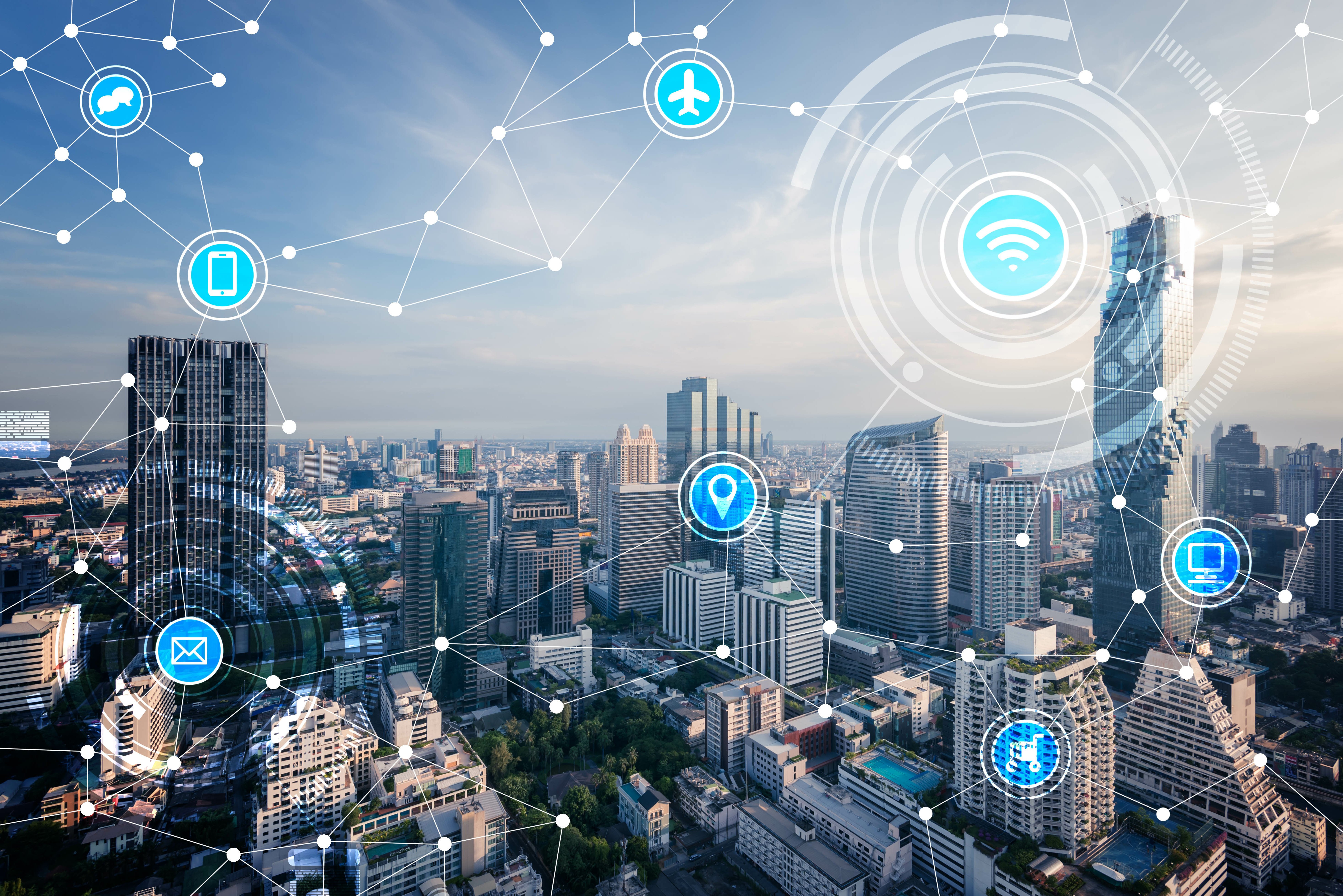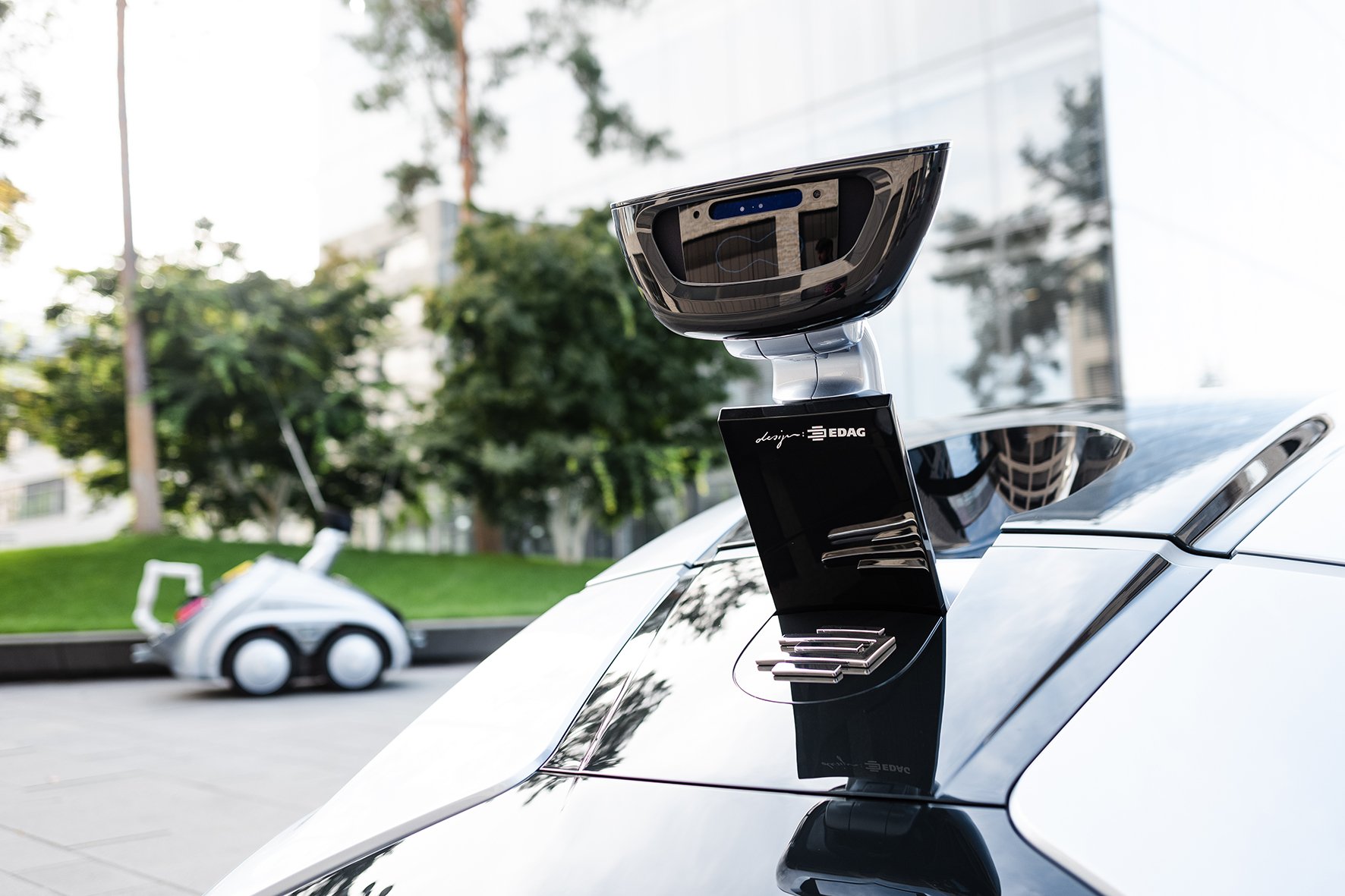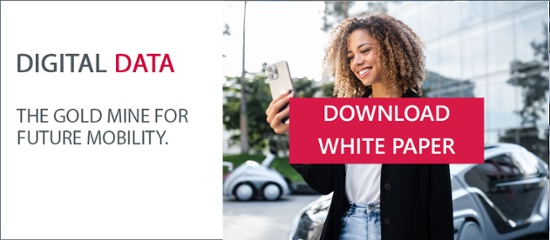The digitalization of traffic in Germany is continually gathering pace. Using vehicle and traffic infrastructure data opens up numerous opportunities, for example in the development of smart cities or new business models. But for this to happen, we need unhindered communication by means of open standards – and the corresponding publicly-owned platforms.
The car of the future is electric, digital and not just a means of transport, but also part of the grid, the electric power supply. Because the energy transition, with many thousands of decentralized supply points, is making it increasingly difficult for grid operators to ensure grid stability. Electricity storage systems that absorb or release energy as required are therefore becoming an increasingly important stabilizing factor. And why go to the enormous expense of setting up large storage systems when the same effect can be achieved locally, using small storage systems that are already available – namely the batteries in electric cars? This is at least the idea behind the concept of bidirectional charging already being practiced in Japan and California, for example.
German vehicle manufacturers will also be making use of the technology in the future. VW, for instance, has announced that all ID models with a 77-kWh battery will be using this technology, initially to ensure the supply from the home energy system, then later to enable energy to be fed back into the public power grids [Source: Volkswagen]. However, this is expected to take about two years. BMW is testing the technology as part of a pilot project involving specially equipped versions of the i3 [Source: BMW], while in Japan, Mercedes, with its EQS and CHAdeMO, the Japanese charging standard, is able to charge bidirectionally into the home supply (V2H, "vehicle-to-home") and into the public grid (V2G, "vehicle-to-grid") [Source: Daimler]. In this country too, there are already startups offering car owners the opportunity to earn money with this type of business model. Up to € 1,000 a year can be earned for contributing to the stabilization of the power grid.
One reason why progress is not faster is the lack of standardization: the ISO 15118-20 standard is to regulate the communication for bidirectional charging – but the standard is still under discussion.
Language confusion instead of uniform data basis
The situation in the traffic flow is even more complex. The needs of municipal, state and private service companies that construct, operate and maintain traffic routes, of the providers of traffic infrastructure - for instance smart traffic lights and lamp posts, and last but not least of the vehicle manufacturers with their brand-specific on-board units (OBU) all have to be reconciled. Not even for the wireless data transmission has a standard platform been found: in Europe and other markets, when it comes to car-to-anything communication (C2X), the two standards pWLAN (WLAN in accordance with IEEE 802.11p) and LTE/5G compete with one another.
Hence there are numerous manufacturer-specific protocols, platforms and interfaces standing in the way of rapid digitalization. Moreover, there is a risk that sheer market power will ultimately prevail - and that American IT groups will as a result not only determine further developments, but also seize the added value generated. With services such as autonomous driving, map services and software platforms, as central communication and infotainment hubs for instance, Google, Amazon, Microsoft & Co. are already encroaching on the domains of the OEMs and offering their services as cooperation partners. And there is no end in sight.
Challenge of the smart city
For the challenges of a future-proof traffic development, it is essential that all the players involved cooperate and create as comprehensive a data basis as possible. Only in this way can traffic be controlled and traffic information supplied by a single provider. Parking status, air quality data, new roadblocks and any that have been removed, congestion and public transport news are just some of the factors influencing how people get from A to B.
Moreover, the quality of strategic traffic planning and operational traffic management can be improved with the corresponding data if, by means of simulation for example, the effects of traffic light controls, new cycle lanes or rerouting are estimated in advance and optimized to meet the required goal. Ideally, municipalities might offer this data to citizens as a transparent, GDPR-compliant service of their smart city.

Coveted mobility data
European automobile manufacturers are indeed in the development phase of uniform data standards and interoperable systems. But there are attempts on the part of the municipalities and other players to consolidate the valuable vehicle and traffic data and utilize it locally. With GAIA-X, the intention is to create a data infrastructure at EU level that will secure the digital sovereignty of European states and the companies based here, and can serve as the basis for a transparent digital ecosystem that will respect the privacy of citizens.
More than 850 members and 425 organizations have come together in the German GAIA-X hub. The Federal Ministry of Economics is funding this initiative in 65 different projects. In Germany, GAIA-X covers ten different domains including the smart city/smart region, to improve the infrastructure by providing data platforms for towns and rural districts.
In addition, the Federal Ministry of the Interior (BMI) is sponsoring this area to the tune of € 850 million euros in 73 projects with the "Smart Cities Made in Germany" program. The aim is to modernize the infrastructure and digitalize the public arena on the basis of the Smart City Charter. Among other things, this recommends that data should remain under the sovereignty of the town collecting and generating it. A further aspect is the use of open source software to avoid vendor lock-ins and ensure access to the source code.
Strong partners required
The municipalities, however, need not just a good technical basis, but also access to the other players, for instance the automotive OEMs and providers of smart transport infrastructures. The list of questions to be clarified is long: functionality, serviceability, data protection (GDPR), data security and the relevant legal conditions pose enormous challenges for cities and local authorities, as well as for vehicle manufacturers.
As an independent and innovative partner to the mobility industry, EDAG can assist local authorities and cities with the conception and implementation of holistic smart city solutions and data platforms. One example of this is EDAG's involvement in the "Campus FreeCity real lab for the research of a networked fleet of modular robot vehicles" project sponsored by BMVI. The CityBot mobility concept developed by EDAG plays an important role in this project. A further project is the visualization of the smart city data platform for the city of Paderborn, which offers innovative services based on urban data.

But for OEMs too, EDAG as your project partner can facilitate and accelerate collaboration with municipalities. As engineering specialists, we see ourselves as mediators and moderators who have insight into both areas. EDAG provides the know-how needed to push development ahead, both for smart cities and for vehicle manufacturers. For example, the ecosystem consisting of the hardware and software developed for the CityBot can be transferred to other vehicles at any time.
If you want to find out more about how EDAG can assist you with smart city projects and the use of digital mobility data, then talk to Karina Schäfer. Or download our white paper "Digital Data: The Gold Mine for Future Mobility".






